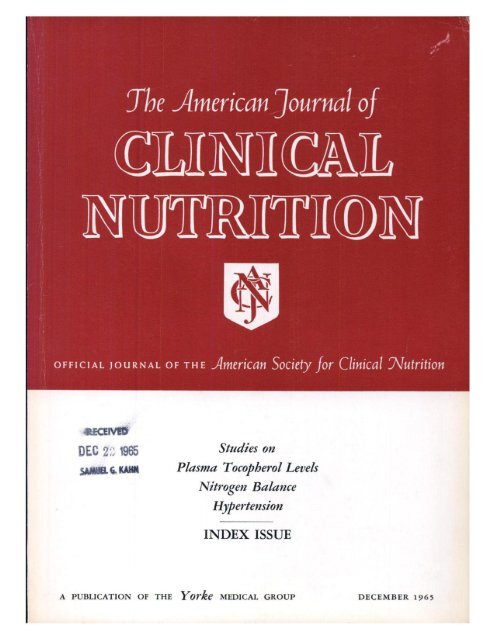Metabolic profile of biodiverse diets in a healthy European cohort
IF 6.5
1区 医学
Q1 NUTRITION & DIETETICS
引用次数: 0
Abstract
Background
There is increasing evidence that diets characterized by food biodiversity could contribute to health outcomes. Greater dietary species diversity has been linked to reduced gastrointestinal cancer risk and all-cause mortality. However, mechanistic pathways supporting the association between food biodiversity and health are just beginning to be explored.
Aim
To characterize the metabolic profile associated with food biodiversity of diets in a pan-European population.
Methods
Dietary species richness (DSR), or the absolute number of unique species in an individual’s diet, was calculated for 7,983 cancer-free control participants within the European Prospective Investigation into Cancer and Nutrition cohort study. Usual dietary intakes in the preceding year were assessed at recruitment with country-specific dietary questionnaires. Metabolomic profiles from blood which included 128 circulating endogenous metabolites,32 polyphenol compounds, and 39 fatty acid isomers were used as biomarkers of potential mechanisms underlying nutrition and health associations. Lasso regression identified key metabolites in discovery and replication sets, and multivariable stepwise linear regression were used to quantify associations between DSR and metabolomic profiles.
Results
A total of 52 metabolites were selected using Lasso regression in the replication set, of which 70% were statistically significant in stepwise linear regression. Higher DSR was associated with lower levels of 4 amino acids (e.g., tyrosine, -0.0231, 95% CI: -0.0362, -0.0100, p = 0.0009) and 2 acylcarnitines (e.g., C14:2, -0.0834, 95% CI: -0.1084, -0.0583, p < 0.0001). Conversely, higher levels were observed for 7 amino acids (e.g., tryptophan, -0.0954, 95% CI: -0.1049, -0.0860, p < 0.0001) and 9 polyphenols (e.g., epicatechin, p = 0.0017).
Conclusion
In this European middle-aged adult population, the circulating metabolic profiles of biodiverse diets are consistent with the metabolome linked with health-promoting diets, indicating metabolite groups that provide metabolic homeostasis, anti-inflammatory, anti-oxidative stress, and anti-obesogenic properties. These findings support the health benefits of consuming more diverse dietary species and may partially explain the inverse associations found in relation with mortality or gastrointestinal cancer.
欧洲健康人群中生物多样性饮食的代谢特征
背景:越来越多的证据表明,以食物生物多样性为特征的饮食可能有助于健康结果。更大的饮食物种多样性与降低胃肠道癌症风险和全因死亡率有关。然而,支持食物生物多样性与健康之间联系的机制途径才刚刚开始探索。目的:表征泛欧洲人群饮食中与食物生物多样性相关的代谢特征。方法:在欧洲癌症与营养前瞻性调查队列研究中,计算了7,983名无癌症对照参与者的饮食物种丰富度(DSR),或个体饮食中独特物种的绝对数量。在招募时使用国别饮食问卷评估前一年的日常饮食摄入量。血液代谢组学图谱包括128种循环内源性代谢物、32种多酚化合物和39种脂肪酸异构体,被用作营养和健康关联潜在机制的生物标志物。Lasso回归确定了发现组和复制组中的关键代谢物,并使用多变量逐步线性回归来量化DSR与代谢组学特征之间的关联。结果:利用Lasso回归,在复制集中共筛选出52个代谢物,其中70%的代谢物经逐步线性回归有统计学意义。较高的DSR与4种氨基酸(如酪氨酸,-0.0231,95% CI: -0.0362, -0.0100, p = 0.0009)和2种酰基肉碱(如C14:2, -0.0834, 95% CI: -0.1084, -0.0583, p < 0.0001)水平较低相关。相反,7种氨基酸(如色氨酸,-0.0954,95% CI: -0.1049, -0.0860, p < 0.0001)和9种多酚(如表儿茶素,p = 0.0017)的含量较高。结论:在欧洲中年成人人群中,生物多样性饮食的循环代谢谱与与健康促进饮食相关的代谢组一致,表明代谢物组提供代谢稳态、抗炎、抗氧化应激和抗肥胖特性。这些发现支持食用更多样化的食物对健康有益,并可能部分解释与死亡率或胃肠道癌症相关的负相关关系。
本文章由计算机程序翻译,如有差异,请以英文原文为准。
求助全文
约1分钟内获得全文
求助全文
来源期刊
CiteScore
12.40
自引率
4.20%
发文量
332
审稿时长
38 days
期刊介绍:
American Journal of Clinical Nutrition is recognized as the most highly rated peer-reviewed, primary research journal in nutrition and dietetics.It focuses on publishing the latest research on various topics in nutrition, including but not limited to obesity, vitamins and minerals, nutrition and disease, and energy metabolism.
Purpose:
The purpose of AJCN is to:
Publish original research studies relevant to human and clinical nutrition.
Consider well-controlled clinical studies describing scientific mechanisms, efficacy, and safety of dietary interventions in the context of disease prevention or health benefits.
Encourage public health and epidemiologic studies relevant to human nutrition.
Promote innovative investigations of nutritional questions employing epigenetic, genomic, proteomic, and metabolomic approaches.
Include solicited editorials, book reviews, solicited or unsolicited review articles, invited controversy position papers, and letters to the Editor related to prior AJCN articles.
Peer Review Process:
All submitted material with scientific content undergoes peer review by the Editors or their designees before acceptance for publication.

 求助内容:
求助内容: 应助结果提醒方式:
应助结果提醒方式:


